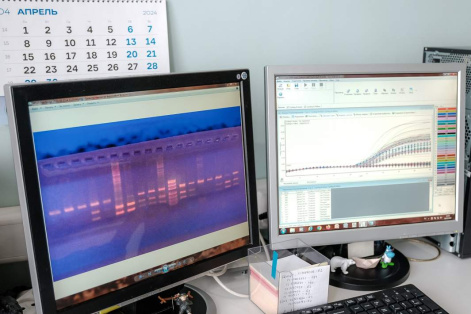Ancient immunity will protect against “diseases of civilization”
19 February 2024 г.

Russian scientists studied the frequency of manifestation of genes that are responsible for innate forms of immunity in the populations of the Nenets, Dolgans, and Nganasans. The results were compared with data on the Russian population of northern Siberia. The study helps to understand why representatives of different ethnic groups are more susceptible to certain infectious and non-infectious diseases. This makes it possible to take into account genetic characteristics when designing drug therapy, which is especially important at an early age, when children have not developed acquired immunity and innate protective mechanisms play the main role.
Why is innate immunity important?
Scientists from the Research Institute of Medical Problems of the North of the Federal Research Center KSC SB RAS have found out why indigenous inhabitants of the Arctic regions of Siberia cope more successfully with infections, while representatives of Caucasian populations living in the same areas, on the contrary, are more resistant to “diseases of civilization”, that is, pathologies of non-infectious origin.
According to researchers, one of the reasons for this phenomenon lies in increased or decreased activity of the so-called lectin pathway of complement activation in different ethnic groups. This is a way of protecting the body from viruses and bacteria, in which lectin proteins play the primary role. These molecules, synthesized in the body, identify foreign elements, bind to them, become activated and trigger an inflammatory process that destroys uninvited guests.
This method of protection is considered to be an innate immunity factor, i.e. the one that protects organisms from the first moments of life.
In general, innate immunity provides faster protection to organisms without prior recognition of pathogens. It differs from acquired (or adaptive) immunity in that the latter is based on the initial identification of “foreign elements” and the development of a specific, most effective method of destroying them.
“In our work, we are trying to understand why some people are more susceptible to infectious and non-infectious diseases. It turns out that this is largely determined by genetic characteristics. We have examined variants of lectin genes in indigenous small ethnic groups of northern Siberia - the Nenets, Dolgans and Nganasans - and found that, compared to Russian populations, they have fewer mutations leading to a decrease in lectin production. In other words, the lectin pathway of complement activation is more pronounced in them, but in the Russian population, on the contrary, it is weakened,” told Marina Smolnikova to Izvestia, who is one of the authors of the study, Candidate of Biological Sciences, head of the molecular genetic research group, leading researcher at the Research Institute of the Ministry of Railways.
How do genetic characteristics manifest themselves?
It is worth keeping in mind, as the scientist noted, that innate forms of immunity are older than acquired ones. Therefore, lectins as an initiator of the body’s defense response are more significant at an early age, when the adaptive mechanisms of immunity have not been fully formed yet. This should be taken into account, for example, when monitoring children's health.
“In particular, in the Russian population, lectin deficiency may be one of the risk factors for babies. However, having survived this age without consequences, the majority of representatives of this group will not differ from their “non-deficit” peers in most health parameters,” Marina Smolnikova clarified.
In addition, there is a hypothesis that in modern humans of Caucasian origin, the lectin pathway of complement activation is redundant, according to the specialist. It can intensify inflammatory processes and provoke more severe diseases. Therefore, experts are now developing methods to artificially reduce the amount of lectins.
At the same time, it is noted that in small Arctic populations, the lectin pathway supports the body in the fight against pathogens.
Genetic mutations that cause low levels of lectins may be associated with higher medical and hygienic protection, as noted Marina Smolnikova.
At the same time, the development of such mutations in Europeans may be a response to “diseases of civilization” caused by a sedentary lifestyle, unhealthy diet and other harmful factors of modern society. Such diseases include, for example, atherosclerosis, obesity, diabetes and cardiovascular pathologies, as well as some forms of cancer.
In general, the researchers believe that the accumulation of data on genetic population characteristics will help identify people’s predisposition to certain diseases.
“For example, during the COVID-19 pandemic, an increase has been observed in knowledge about the role of low lectin levels in the spread of infections. Therefore, the study of the genes responsible for this in Russian populations has become relevant,” said Marina Smolnikova.
In the future, according to the specialist, it is likely that every person at the beginning of life (or his parents before birth) will be able to receive their own personal genetic passport. This will make it possible to form effective individual life development strategies.
Share:
